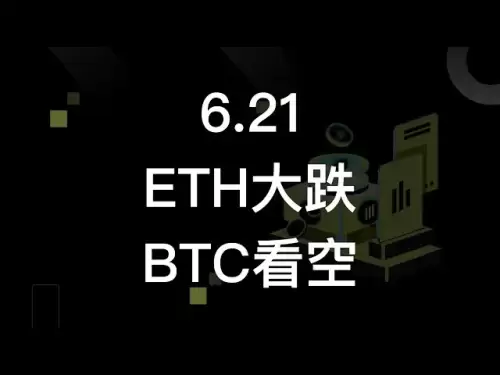-
 Bitcoin
Bitcoin $103,668.6810
-0.42% -
 Ethereum
Ethereum $2,427.2834
-2.40% -
 Tether USDt
Tether USDt $1.0003
0.02% -
 XRP
XRP $2.1193
-0.30% -
 BNB
BNB $636.2387
-1.32% -
 Solana
Solana $140.9214
-1.16% -
 USDC
USDC $0.9999
0.00% -
 TRON
TRON $0.2731
-0.04% -
 Dogecoin
Dogecoin $0.1609
-1.82% -
 Cardano
Cardano $0.5779
-0.26% -
 Hyperliquid
Hyperliquid $33.2383
-4.10% -
 Bitcoin Cash
Bitcoin Cash $473.9152
-2.33% -
 Sui
Sui $2.6499
-3.20% -
 Chainlink
Chainlink $12.5513
-1.73% -
 UNUS SED LEO
UNUS SED LEO $8.9251
0.39% -
 Stellar
Stellar $0.2424
-1.05% -
 Avalanche
Avalanche $17.1776
-2.32% -
 Toncoin
Toncoin $2.9186
-2.19% -
 Shiba Inu
Shiba Inu $0.0...01119
-2.30% -
 Litecoin
Litecoin $83.1100
-0.05% -
 Hedera
Hedera $0.1435
-1.31% -
 Monero
Monero $312.1229
0.28% -
 Ethena USDe
Ethena USDe $1.0006
0.00% -
 Polkadot
Polkadot $3.4148
-0.76% -
 Dai
Dai $1.0000
0.00% -
 Bitget Token
Bitget Token $4.2877
-0.24% -
 Uniswap
Uniswap $6.8295
-8.76% -
 Pepe
Pepe $0.0...09732
-1.53% -
 Pi
Pi $0.5345
-0.82% -
 Aave
Aave $245.5038
-3.02%
How to buy AAVE coin? Graphic tutorial of AAVE coin buying and selling transaction operation steps
Before investing in AAVE, conduct thorough research on its market performance, applications, and development team to assess its potential and associated risks.
Oct 09, 2024 at 09:47 pm

How to Buy AAVE Coin: A Step-by-Step Guide
Step 1: Choose a Cryptocurrency Exchange
- AAVE is listed on several cryptocurrency exchanges. Select a reputable exchange that offers AAVE trading and meets your security and liquidity requirements.
- Some recommended exchanges include Binance, Coinbase, and Kraken.
Step 2: Create an Account and Verify Your Identity
- Visit the website of your chosen exchange and create an account.
- Most exchanges will require you to provide personal information and undergo identity verification. This is to comply with anti-money laundering (AML) and know-your-customer (KYC) regulations.
Step 3: Deposit Funds into Your Account
- Once your account is verified, you need to deposit funds to purchase AAVE.
- The exchange will provide various deposit options, such as bank transfer, credit card, or other cryptocurrencies.
- Choose a convenient option and deposit the desired amount.
Step 4: Search for AAVE
- Navigate to the trading section of the exchange and search for "AAVE."
- You will see different AAVE trading pairs, such as AAVE/USDT or AAVE/BTC.
Step 5: Place a Buy Order
- To buy AAVE, you need to place a buy order.
- Specify the amount of AAVE you want to purchase and the type of order (e.g., market order or limit order).
- A market order immediately buys AAVE at the current market price, while a limit order allows you to set a specific price.
Step 6: Execute the Trade
- Once you have placed the buy order, it will be executed and the AAVE will be credited to your account.
- You can check your account balance to confirm the transaction.
Step 7: Store Your AAVE
- If you do not plan to trade AAVE immediately, it is recommended to store it in a secure wallet.
- You can transfer the AAVE from the exchange to a hardware wallet or a software wallet that supports AAVE.
Additional Tips:
- Research AAVE before investing, including its market performance, use cases, and development team.
- Consider the risks associated with cryptocurrency investments and invest only what you can afford to lose.
- Use two-factor authentication (2FA) to enhance the security of your trading account.
Disclaimer:info@kdj.com
The information provided is not trading advice. kdj.com does not assume any responsibility for any investments made based on the information provided in this article. Cryptocurrencies are highly volatile and it is highly recommended that you invest with caution after thorough research!
If you believe that the content used on this website infringes your copyright, please contact us immediately (info@kdj.com) and we will delete it promptly.
- JasmyCoin's Price Drop: Hitting Major Levels – Is Another Dump Coming?
- 2025-06-22 00:25:12
- Violet Ray Caramella: A Life of Light, Love, and Legacy
- 2025-06-22 00:25:12
- Dogwifhat, Arctic Pablo, and the Meme Coin Mania: What's Hot Now?
- 2025-06-22 00:30:12
- ADA Price, Web3 AI, Crypto Trading: Navigating the Hype
- 2025-06-22 00:30:12
- Martini Market Heats Up XRPL with $MRT Presale: A New DeFi Frontier?
- 2025-06-22 00:35:12
- Ethereum's Fusaka Fork: A Network Supercharge in Progress
- 2025-06-22 00:35:12
Related knowledge
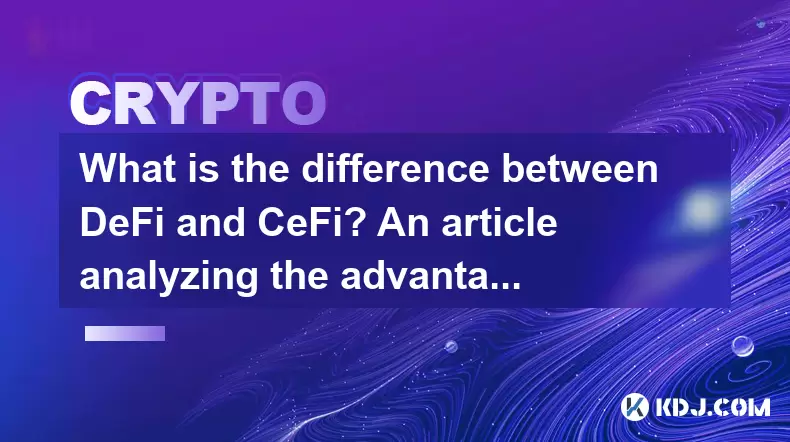
What is the difference between DeFi and CeFi? An article analyzing the advantages and disadvantages of both
Jun 13,2025 at 03:57am
Understanding the Foundations of DeFi and CeFiTo fully grasp the difference between DeFi (Decentralized Finance) and CeFi (Centralized Finance), it’s essential to understand their foundational structures. DeFi operates on blockchain technology, primarily using smart contracts to execute financial services without intermediaries. In contrast, CeFi platfo...
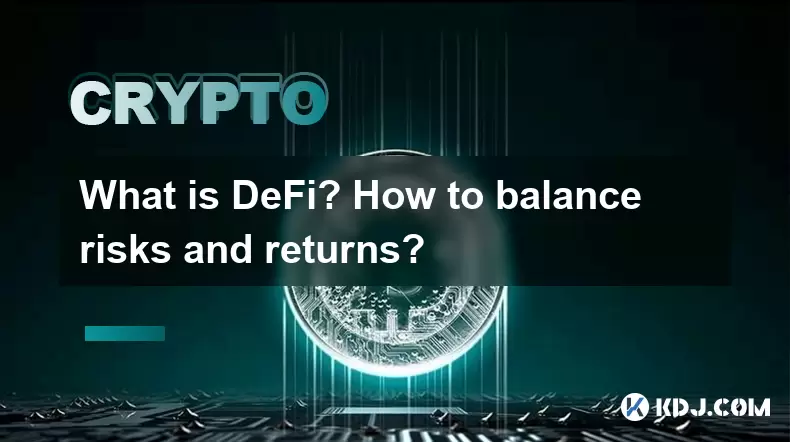
What is DeFi? How to balance risks and returns?
May 31,2025 at 12:22pm
What is DeFi? How to Balance Risks and Returns? Decentralized Finance, commonly known as DeFi, represents a revolutionary shift in the financial ecosystem, leveraging blockchain technology to create an open, permissionless, and transparent financial service network. Unlike traditional finance, which relies on centralized institutions like banks, DeFi op...
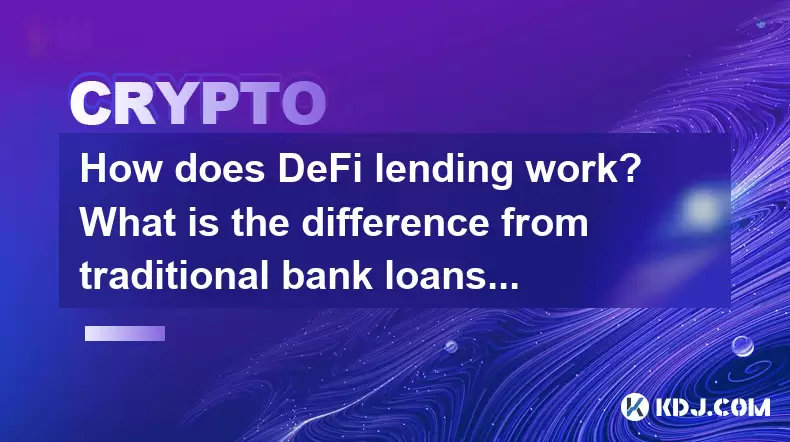
How does DeFi lending work? What is the difference from traditional bank loans?
May 29,2025 at 05:36pm
Introduction to DeFi LendingDeFi lending, or decentralized finance lending, represents a revolutionary shift in the way borrowing and lending are conducted. Unlike traditional bank loans, DeFi lending operates on blockchain technology, offering a decentralized, transparent, and often more accessible approach to finance. This article will explore the mec...
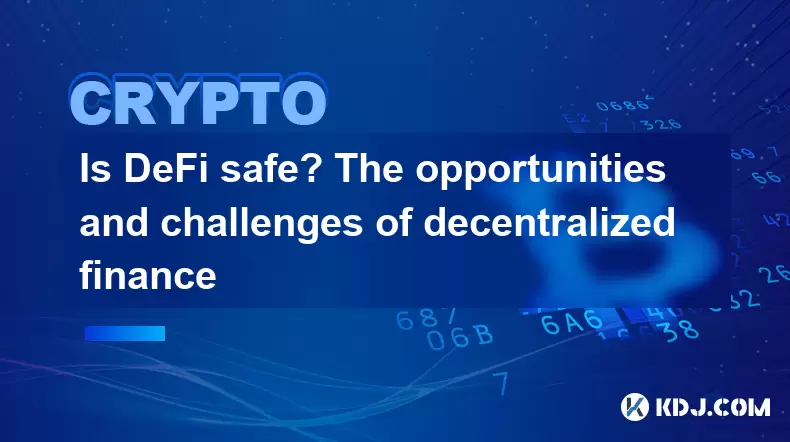
Is DeFi safe? The opportunities and challenges of decentralized finance
May 27,2025 at 02:28pm
Decentralized Finance, commonly known as DeFi, has revolutionized the financial landscape by offering a range of financial services without the need for traditional intermediaries like banks. As with any innovative technology, the question of safety is paramount. This article delves into the opportunities and challenges that come with DeFi, providing a ...
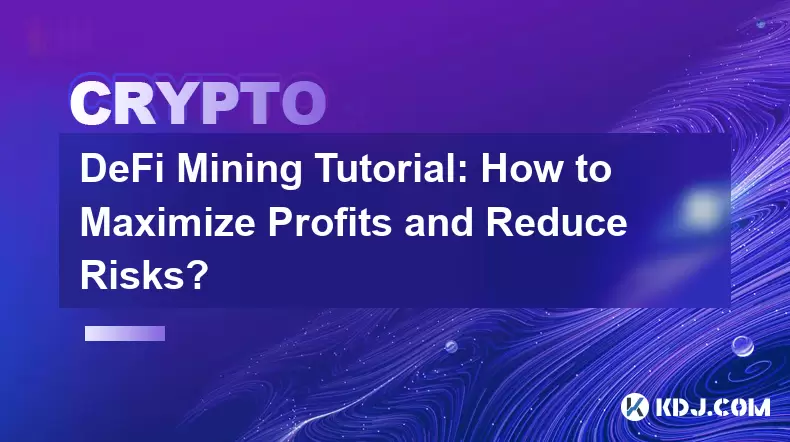
DeFi Mining Tutorial: How to Maximize Profits and Reduce Risks?
May 27,2025 at 07:42am
DeFi, or Decentralized Finance, has opened up a new world of opportunities for crypto enthusiasts looking to maximize their profits through various mining strategies. However, with great potential comes significant risk. This tutorial aims to guide you through the process of engaging in DeFi mining while focusing on maximizing profits and reducing risks...
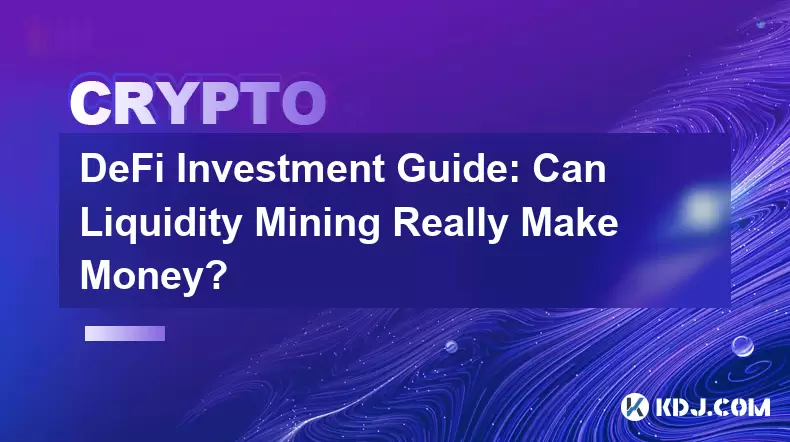
DeFi Investment Guide: Can Liquidity Mining Really Make Money?
May 28,2025 at 10:18am
Introduction to Liquidity Mining in DeFiLiquidity mining has emerged as a popular method for earning passive income within the decentralized finance (DeFi) space. This process involves users providing liquidity to decentralized exchanges or lending platforms in exchange for rewards, often in the form of the platform's native tokens. But the question on ...

What is the difference between DeFi and CeFi? An article analyzing the advantages and disadvantages of both
Jun 13,2025 at 03:57am
Understanding the Foundations of DeFi and CeFiTo fully grasp the difference between DeFi (Decentralized Finance) and CeFi (Centralized Finance), it’s essential to understand their foundational structures. DeFi operates on blockchain technology, primarily using smart contracts to execute financial services without intermediaries. In contrast, CeFi platfo...

What is DeFi? How to balance risks and returns?
May 31,2025 at 12:22pm
What is DeFi? How to Balance Risks and Returns? Decentralized Finance, commonly known as DeFi, represents a revolutionary shift in the financial ecosystem, leveraging blockchain technology to create an open, permissionless, and transparent financial service network. Unlike traditional finance, which relies on centralized institutions like banks, DeFi op...

How does DeFi lending work? What is the difference from traditional bank loans?
May 29,2025 at 05:36pm
Introduction to DeFi LendingDeFi lending, or decentralized finance lending, represents a revolutionary shift in the way borrowing and lending are conducted. Unlike traditional bank loans, DeFi lending operates on blockchain technology, offering a decentralized, transparent, and often more accessible approach to finance. This article will explore the mec...

Is DeFi safe? The opportunities and challenges of decentralized finance
May 27,2025 at 02:28pm
Decentralized Finance, commonly known as DeFi, has revolutionized the financial landscape by offering a range of financial services without the need for traditional intermediaries like banks. As with any innovative technology, the question of safety is paramount. This article delves into the opportunities and challenges that come with DeFi, providing a ...

DeFi Mining Tutorial: How to Maximize Profits and Reduce Risks?
May 27,2025 at 07:42am
DeFi, or Decentralized Finance, has opened up a new world of opportunities for crypto enthusiasts looking to maximize their profits through various mining strategies. However, with great potential comes significant risk. This tutorial aims to guide you through the process of engaging in DeFi mining while focusing on maximizing profits and reducing risks...

DeFi Investment Guide: Can Liquidity Mining Really Make Money?
May 28,2025 at 10:18am
Introduction to Liquidity Mining in DeFiLiquidity mining has emerged as a popular method for earning passive income within the decentralized finance (DeFi) space. This process involves users providing liquidity to decentralized exchanges or lending platforms in exchange for rewards, often in the form of the platform's native tokens. But the question on ...
See all articles























